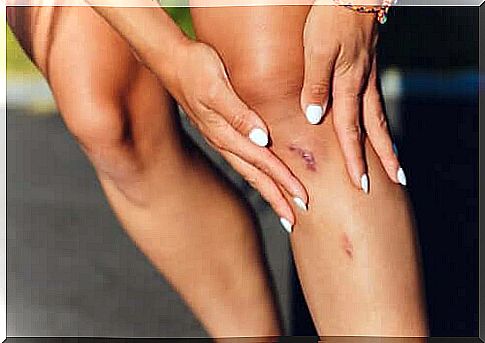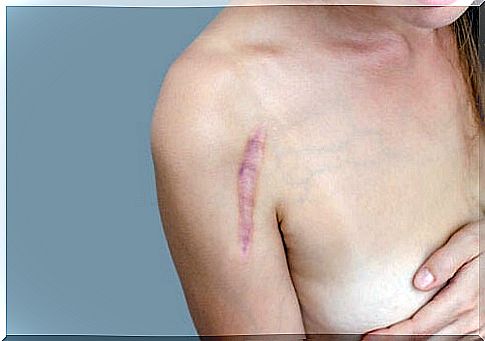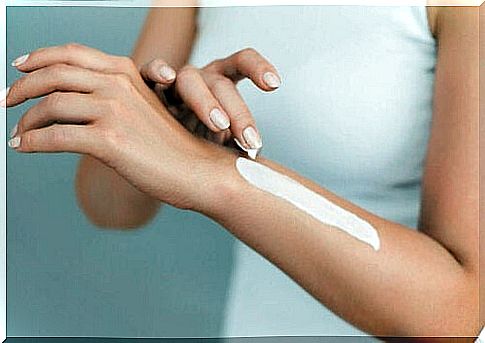These Tips Will Take Care Of Your Scars In The Summer

In summer, it is important to be especially careful with scars that are exposed to sunlight. Although today scars can be eradicated and even removed by a variety of cosmetological and surgical procedures, exposure of scars to sunlight should be avoided due to radiation-induced complications.
Remember that almost all lesions that break the surface of the skin cause scarring. They don’t always show up, but it takes years for many wounds to heal and with it, the scars to disappear. For this reason, we want to give you some helpful tips to help you take care of your scars during the summer as well.
How are scars created?
Before we talk about the treatment of scars, let’s look at how scars are formed at all. When a wound forms, the skin begins a healing process, the duration of which varies depending on the severity of the damage.
When the skin breaks, several different stages begin to take place in its healing. The main process of wound healing consists of the following four steps:
- Coagulation Phase : The first phase begins when the wound begins to bleed, at which point the body begins the coagulation process to stop the bleeding. When the clot dries, a scab forms on the wound.
- Inflammation Phase : This phase confirms the previous coagulation phase. At this point, the body’s own immune system’s response begins to prepare for possible infections and in turn protects the wound. The blood vessels dilate, allowing the wound to be properly nourished and oxidized. For this reason, the area these days is red and inflamed.
- Proliferative stage: In this third stage, the damaged tissue regenerates and begins to shrink. Collagen formation is started to be stimulated about 15 days after the onset of the lesion.
- Regeneration Phase : The fourth and final phase begins when the skin begins to regenerate. This phase can take up to 2 years depending on the severity of the damage and eventually ends in scar formation.

4 useful tips to help you treat your scars even in the summer
Scars are a very common reason to visit a dermatologist’s office, especially if they were born a short time ago and summer is approaching. If the scar is white (that is, more than a year and a half has passed since the lesion formed), no special methods are needed to treat it. If, on the other hand, less time has elapsed since the formation of the scar, it is worth introducing a few important measures for the treatment of the scar, especially during the summer.
Use sunscreen
The latest updates, published in 2016 by Seminars in Plastic Surgery , which specializes in plastic surgery , have found that new scars less than 1.5 years old are highly susceptible to damage from solar UV radiation. In particular, radiation can cause skin hyperpigmentation as well as structural changes in skin collagen.
It is therefore recommended that you try to minimize the exposure of the scar to the sun by covering it when moving outdoors with a bandage or clothing. Alternatively, it is necessary to use a sunscreen with a sufficiently high level of protection and an SPF of at least 50. A sunscreen should be applied to the damaged skin for 18 months after birth.
Ultraviolet rays increase angiogenesis, or neovascularization. As a result, scar redness increases and can lead to hyperpigmentation of the skin. Sunscreen helps prevent skin melanogenesis due to stimulation produced by UV rays.
Apply moderate pressure to the skin using gel spatulas
The use of silicone or silicone gel products, spatulas, and pressure textiles is considered the recommended first line of care for the treatment of fresh scars. According to a study specializing in aesthetic plastic surgery, the new silicone gel composition produces a thin and supple layer on top of a fresh wound that effectively protects the skin.
Moisten the area
It is essential that you keep the scarred skin moisturized so that it remains flexible enough to regenerate more effectively. There are special products that help improve the appearance of severe scars while having a moisturizing and scar softening effect.
Creams containing vitamins A and E or hyaluronic acid can also be used to treat scarring during the summer. Another option is to apply Vaseline to the damaged skin, which helps keep the wound in good condition thanks to its moisturizing power.

Rub damaged skin daily
To promote the healing process of damaged skin, it is helpful to rub the skin. Massage can be started after the first healing period, i.e. 2 or 3 weeks after the onset of the lesion.
According to information published in the journal Advances in Wound Care, it is highly recommended that massage be used as a treatment to smooth and soften scars that have already formed. Its use results in a more elastic and even scar by breaking down the excess and inelastic collagen formed on the skin.
It is important that you take care of your scars during the summer as well
When the scars are fresh and have not had time to complete all the stages of healing, their exposure to the sun should be avoided by all possible means. For this reason, especially in summer time, it is best to protect your fresh scars from direct sunlight.
The continuous daily use of sunscreen also reduces the harmful effects of the sun’s UV radiation. Combine it with other measures such as gel sprays and moisturizing skin care products. Treating difficult scars requires a lot of time and patience, but with the tips we give, you are sure to succeed!









